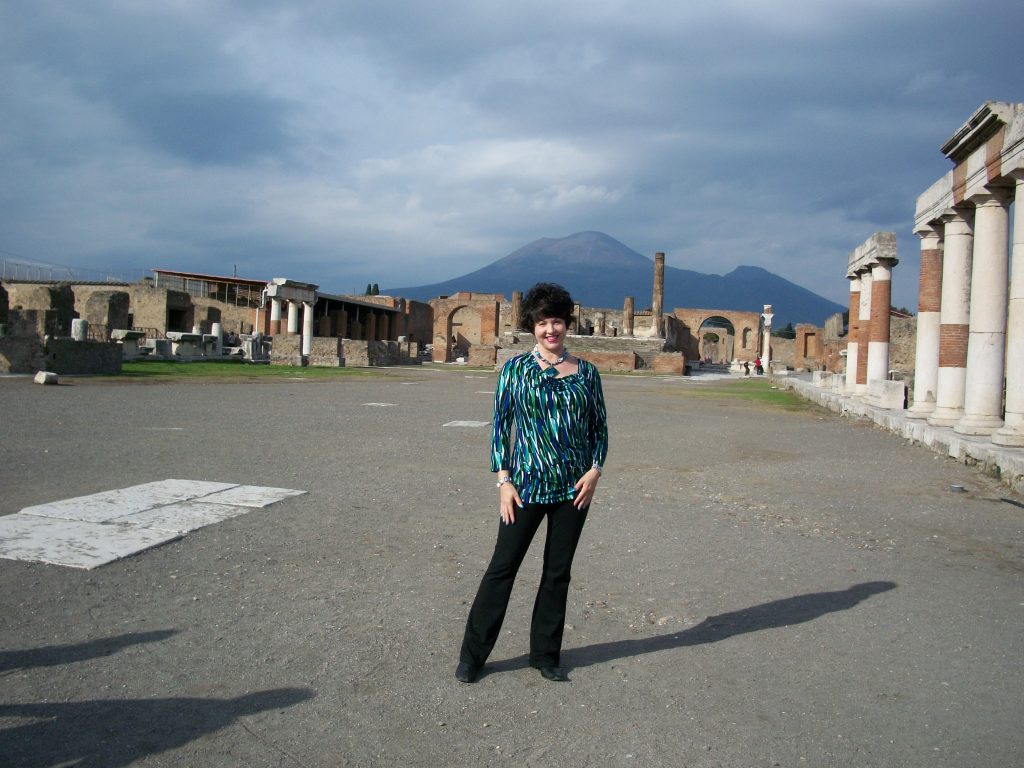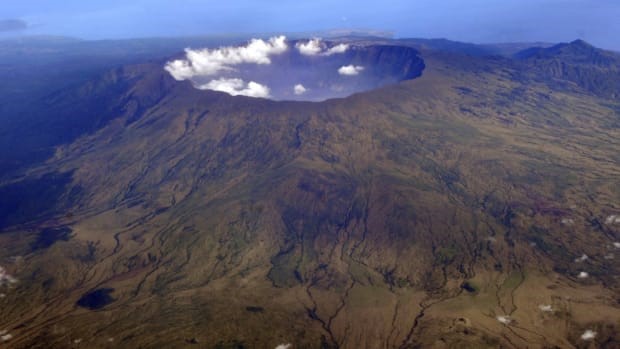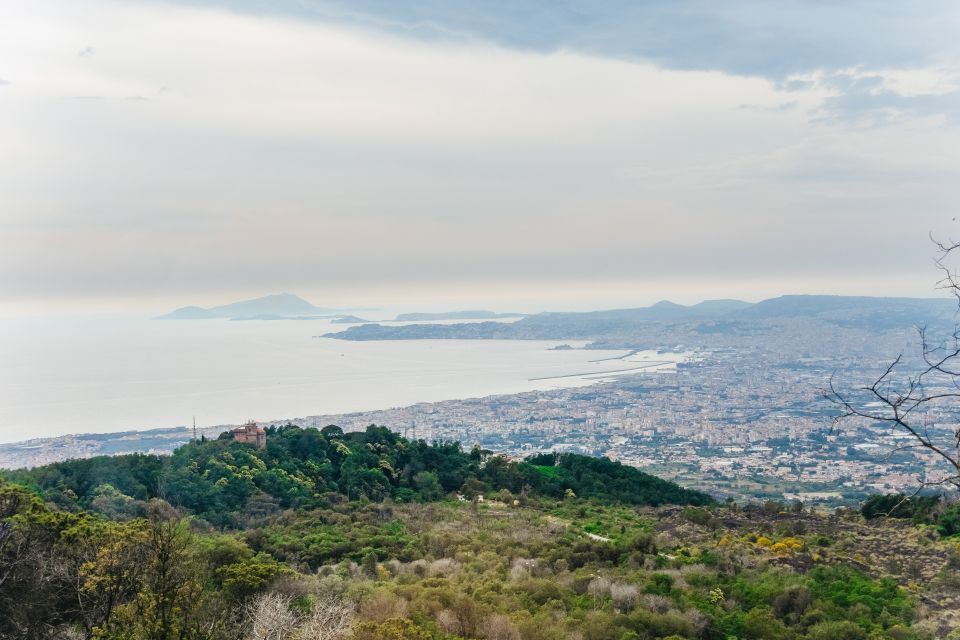Where can you walk down ancient streets that still show the ruts of wagon wheels and the signs of everyday life before it became a tomb for 2000 people? It is the largest outdoor museum in the world, and located about 5 miles from the source of its destruction, Mount Vesuvius. Ok, that was too easy: Pompeii!

On a trip to Naples (about 20 miles away), Positano and the Amalfi Coast, I spent a day exploring this intriguing area with a sense of wonder and astonishment. The all-day tour started with pick up at my central Naples hotel in a minibus with 8 other inquisitive visitors, and it was a short drive to the UNESCO World Heritage site.
The walled city of Pompeii was a thriving Roman town for several hundred years before Mt. Vesuvius erupted in 79 AD and decimated everyone and everything around it. The population was estimated around 12,000, plus 10,000 or more in the surrounding towns, so when the city was re-discovered in 1748 under 20 feet of volcanic ash, it was a treasure trove of perfectly preserved artifacts, buildings, and documents detailing 1st Century life.



I was captivated by several things:
A. The level of intricate details – Faded artwork, frescoes and mosaics that must have been such brilliant colors depicted all areas for normal everyday activities.


B. The level of advancement – How they managed sanitation, markets and trading, architecture, economic classes, and traffic systems were extremely advanced.

C. The level of wealth and success – As indicated by the number, scale and opulence of villas and mansions with ornate fountains, statues, and private gardens, temples, the embellishments on buildings like the library, gymnasium, basilica, arena, market hall, and amphitheater, as well as on personal ornaments and jewelry.


But the thing that moved me most was the plaster castings used to fill the voids of where and how people died. I could see the wrinkle lines on their clothing and the terror on their faces. Many were suffocated by the ash, but other were caught in the molten lava and debris that flowed at over 100 miles an hour. They couldn’t out run it. It overtook them so fast, that they were preserved clutching their loved ones, with their mouths open in fright and the agony of instant incineration. I stood there trying to imagine the horror, and was overwhelmed with emotion of what that day might have been like. I choose to believe it was over quickly.


The silver lining is what we get to learn about the past. As someone who loves history (and yes, I paid attention in school, even though I’ve forgotten a lot of it, and now, travel has provided me a living classroom to see, touch and feel history in a memorable way), I am grateful for the opportunity.
After the tour, we loaded up in the van and drove over to Mt. Vesuvius, where we could get to the upper parking lot. From there, it is about a mile hike virtually straight up.
Now, I’m going to take a moment to brag a little (because I’ve earned the right!), so if you don’t want to read about me patting myself on the back, skip this paragraph 😊 The tour passengers and I all started the arduous climb at the same time. Not knowing what to expect, I navigated the switchbacks slow and steady, and controlled my breathing with a “2 steps breathe in/2 steps breathe out” rhythm. The others were all much younger and looked like gazelles gracefully bounding up the trail (effectively leaving me in their dust). But I kept at it: no talking, just focusing on breathing in and out, and one foot in front of the other (and letting the mantra play over and over in my head, “Your thighs aren’t burning, your thighs aren’t burning!!”). Low and behold, the youngsters had to stop and rest long enough for me to pass them. The OLD Lady reached the summit first!
Feeling good about myself, I enjoyed the view of the crater (an ACTIVE volcano), Pompeii and the Bay of Naples, and then started the trek back down. It is actually harder to go down (though it was nice not to have my quadriceps screaming) because you have to lean back and bend your knees, putting pressure on the lower back and shins, so you don’t go careening down the mountainside. On the bright side, I got to work out a different set of muscles 😊


It seems to go without saying, but wear comfortable, sturdy walking shoes. I saw 2 young women during my hike wearing 6” platform pumps and thigh high stiletto heeled boots struggling to stay upright, and although they made it up and back, I’m guessing their feet were not thanking them!
An hour and a half later, the bus ride back to Naples was quiet, as we all ruminated on what we experienced that day. Exhausted and awed, I slept well that night.
Links:
https://en.wikipedia.org/wiki/Pompeii
https://www.history.com/topics/ancient-history/pompeii
https://www.viator.com/Naples-tourism/Pompeii-Tours-from-Naples/d508-t696
https://www.getyourguide.com/naples-l162/pompeii-ruins-and-mt-vesuvius-combined-day-tour-t11049/ (Private guides)



